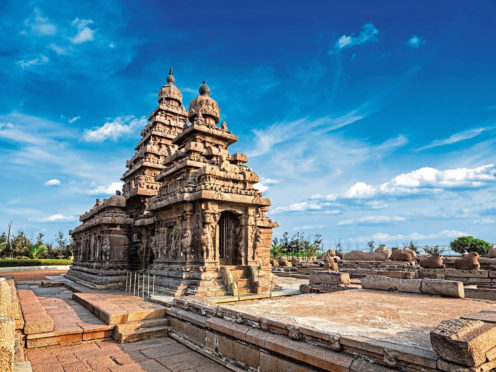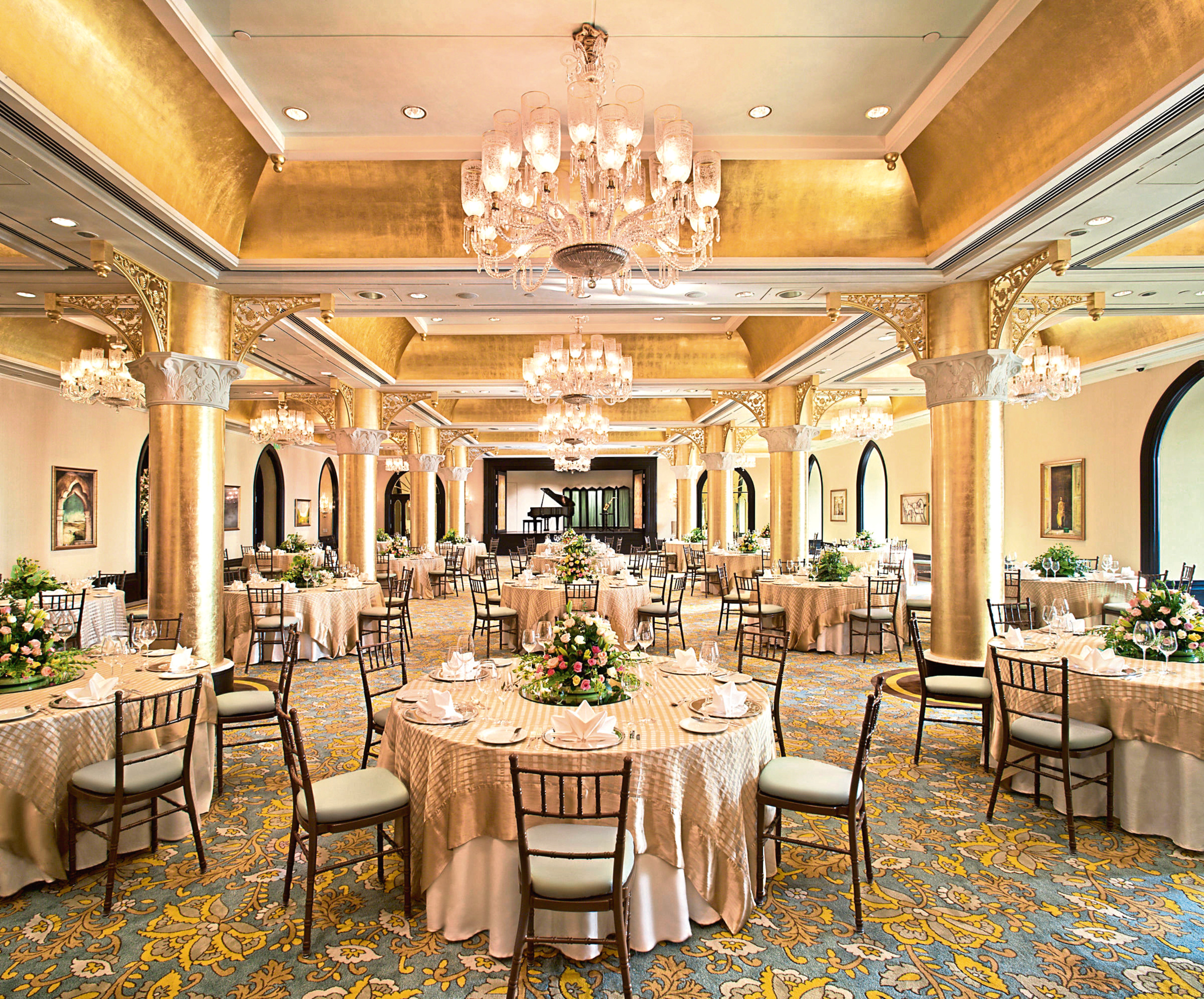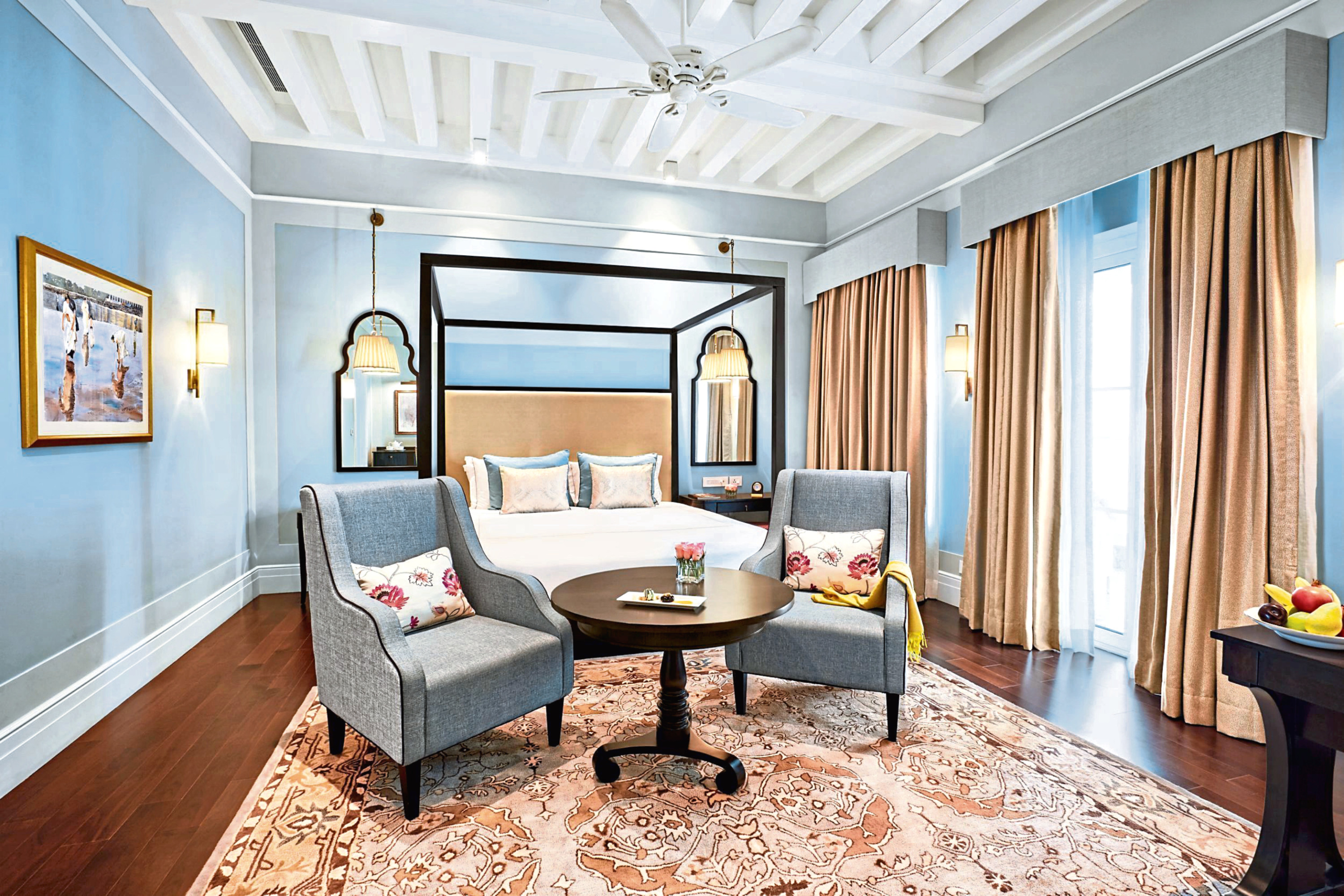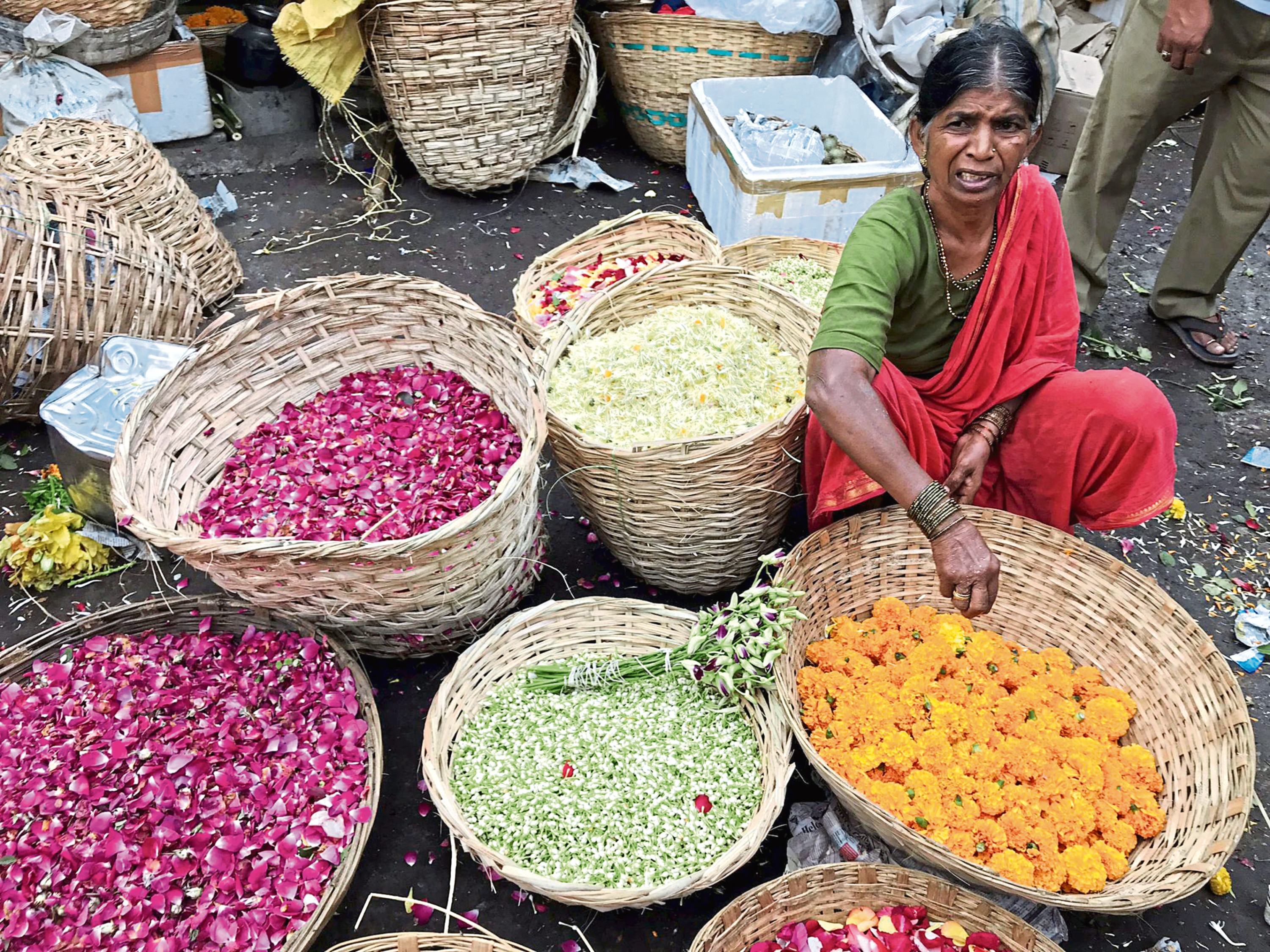
It’s 5.30am and I’m bleary-eyed from the early start – but as soon as I reach the south Bombay fish market, the smell hits me and shocks my weary senses awake.
This is peak time at the bustling market. The floor is wet with pungent water, yet the trawls are fresh.
As I step over huge pomfret and tuna, ladies hurry by with wide bowls of the latest catch balanced on their heads. They are Koli women – descended from the original inhabitants of Mumbai – and have long run the show around here, bartering, auctioneering and heaving the fish into Sassoon Docks.
Fully awake, with the sun creeping over the horizon, I step out of the market and head north through the metropolis. Mumbai, I’m told, is a city but Bombay (as most people still call it) is a feeling.
Negotiating its busy roads, that couldn’t be more true – the honk of horns from scooters whizzing by is almost continuous, while the sights and smells change with each second that passes, as we switch lanes on the manic streets.
There are street barbers, fruit sellers, and an array of wandering animals.
Cows – revered as sacred, of course – incite a faster reaction than humans from drivers, if they haphazardly wander into the road.
Bicycles scoot through the smallest gaps, while women in saris riding side-saddle on the back of motorbikes cling on, as they weave through the heavy traffic.
We see all this, and more, as part of the No Footprints: Mumbai By Dawn tour (nfpexplore.com), which brings sightseers to the most vibrant spots, before the city wakes.
Of course, some of the sounds, sights and smells in this city of 20 million people are less desirable than others – most starkly the unforgettable image of its slums.
They are a far cry, the locals say, from the impression broadcast around the world in the hit 2008 film Slumdog Millionaire but nonetheless, they are still a prominent feature in a city of two tales.
Juxtaposed next to sky-high luxury apartments, the slums are home to around half the city’s population.
Amid the poverty rise stunning buildings built during India’s colonial era. From the Victoria Terminus station – where, unlike similarly grand structures in the UK, the trains unwaveringly run on time – to Elphinstone College, there is an architectural charm left behind from that period in time.
Outside the station, now officially called Chhatrapati Shivaji Terminus in honour of an Indian warrior king, newspaper distributors are piling papers high on the backs of their bikes.
Dozens of different titles, written in different languages, are meticulously ordered and then loaded onto rear pannier racks, forming eight-foot-tall newspaper mountains.
It’s hard to miss the “three religions of India” – cricket, cinema and chai. Bollywood billboards line the streets, chai-tea sellers stand on every corner, and cricket is a sight to behold at the Oval Maidan.
It’s a dusty field of dreams for the hundreds of hopeful men and boys who gather here daily, honing their skills and wishing they could one day join the national team.
Though to me, it’s a muddle of wickets, bats and balls.
Bombay’s charming chaos is energising and exhausting in equal measure, and I can’t say I’m not a little bit relieved when our guide, Adi, tells me we’re heading back to the sanctuary of the Taj Mahal Palace Hotel, where we’re staying.
It’s not merely an icon of the city but part of its history. It was the first hotel in India to have electricity, an all-day restaurant, and the city’s first licensed bar.
In 2008, the Taj fell victim to the horrific terrorist attacks that besieged parts of Mumbai – and images of its burning exterior beamed around the world.
It took the hotel several months to fully recover but it has since hosted royalty and foreign dignitaries – as it had done for more than a century before.
The striking domes and elegant rooms make the hotel itself a destination to explore, while its nine restaurants offer the best of Asia on a plate.
Souk, at the top of the tower wing, indulges diners with spectacular panoramic views of the iconic monument, Gateway of India, and beyond, while local specialities are on offer at Masala Kraft.
The hotel also boasts what must be the most serene spot in all of Mumbai in the form of its new-look Jiva Spa.
Guests are treated like royalty throughout the hotel, where nothing, it seems, is too much bother.
Little touches, like bookmarks slotted into my bedside book – the page corners of which I had naughtily folded over – make the Taj stand tall among the world’s best hotels.
Despite the temptation to stay firmly put in these sumptuous surroundings, there is a lot more of India to see.
Chennai, formerly Madras – but still known as such – lies on India’s south-eastern coast.
Like Mumbai, its rich colonial history is interwoven in the colourful culture. The city is huge – with a population of eight million – but it feels smaller and less boisterous.
After a two-hour flight, we’re swiftly driven to the Taj Connemara, southern India’s oldest hotel, which has just reopened after a two-year renovation.
It’s a tasteful blend of classic colonial and art deco – and named after an Irish Baron Lord Connemara, the then Governor of Madras. While the history books have not been kind to his colourful life – as the hotel’s heritage tour explains – the grand building has become a symbol of the city.
Diwali – the Hindu festival of light – is in full swing as we arrive. Firecracker bangs echo through the streets and beautiful flower garlands decorate shops and houses.
In the evening, we’re treated to a traditional dance on a stage surrounded by candles.
Chennai, too, it seems, is a (welcome) assault on the senses.
The city, the “film music capital” of southern India, is famed for its artistic and culinary heritage.
From mid-December, the Madras Music Season takes over for six weeks, with more than 2,000 performances flowing through.
But a street-food tour is perhaps the best way to get a flavour of the place, and our wonderful guide, Lakshmi, does not disappoint.
She not only brings us delicious local delicacies as we walk through the southern district of Mylapore but takes us to the technicolour Kapaleeshwarar Temple.
It’s a feast for the eyes, dedicated to the Hindu deity Shiva, and a hard sight to beat.
Its magnificence isn’t unique, though, as I discover the next day when we drive an hour south of Madras to the Mahabalipuram Temples – a collection of Unesco-recognised Seventh and Eighth Century monuments.
They’re an engineering marvel, having been chiselled out of single granite blocks, adorned with intricate depictions of Hindu gods.
We only have an afternoon here but you could easily spend a whole day exploring the hundreds of carvings and monuments.
Later on, back at the hotel, our last night is marked with one of the best dinners of the trip, at the Connemara’s Raintree Restaurant.
A flavourful end to an electrifying week, that’s truly been a feast for all the senses.
How to get there: Rooms at the Taj Mahal Palace, Mumbai, start from £213. Rooms at the Taj Connemara, Chennai, start from £202. Visit taj.tajhotels.com
KLM (klm.com; 020 7660 0293) flies to Mumbai from London City and Heathrow, via Amsterdam. Return economy fares start from £610.
Jet Airways (www.jetairways.com) offers flights between Mumbai and Chennai from £55 one way in economy class.

Enjoy the convenience of having The Sunday Post delivered as a digital ePaper straight to your smartphone, tablet or computer.
Subscribe for only £5.49 a month and enjoy all the benefits of the printed paper as a digital replica.
Subscribe © PA / Taj
© PA / Taj © PA / Taj
© PA / Taj © PA / Harriet Line
© PA / Harriet Line